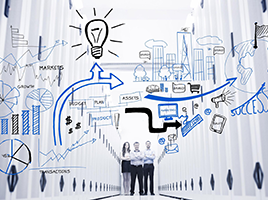
Healthcare faces many challenges such as increasing costs and maintaining various standards for medical conditions. The field of healthcare is handled differently in each country, and in the U.S. it has been the aim to reduce costs in order to reach a wider audience. To reach this goal, as well as anticipate and handle other small challenges along the way, it is important that the field becomes more patient-centric.
Digital Care Software
Before embarking on any major changes, it is important to study the state of the healthcare framework in its current form. This includes pinpointing inefficiencies and performing a gap analysis to identify the main points of concern. Only after this step is completed efficiently would it be possible to proceed further and incorporate digital care management through a Real-Time Healthcare System (RTHS) which is focusses patients.
Using the Power of Digital Technology
There are certain advanced platforms that incorporate the best of technological advantages to deliver healthcare solutions. Overall, the technological consultants are the best in achieving the desired results. Consider HCL Tech’s 3I Platform is based on this approach and contains the following layers:
- The information layer captures all the data about the patient is one area proving invaluable to healthcare needs. Newer and more efficient data storage and access mechanisms could be a big step in improving overall efficiency.
- Once the data storage mechanisms are clear, it is the analysis of this information that comes into play. This area encompasses several important analytics such as level of medicinal adherence, behavior of high-risk patients, utilization of resources and any inefficiency in procedures. This is an important layer that helps in deciding the appropriate corrective measures in the solution. For example, some gaps in efficiency could be addressed by medical device engineering with the help of a technology service provider.
- One of the biggest gaps in the healthcare mechanism is the communication between the patient and the healthcare professional; this is another vital challenge that technology has addressed. The technological improvement will impact reminders and monitoring systems, providing an easy transition for in-house patients from admission up to the time of discharge.
A good RTHS should take care of the patient’s needs, should be mobile for ease of access, collaborative in its reach and demanding in the need to acquire and analyze data. Standalone and piecemeal solutions are no longer going to be sufficient. Healthcare IT companies need to be aware of the bigger picture as it takes time to research and come up with a complete solution. This also means identifying major priorities such as re-engineering of processes, as and when required to move onto higher priorities.
Redesigning the framework and migrating to an RTHS system requires a defined roadmap, as these activities may vary in complexity depending on the current state of the healthcare framework. An experienced partner providing an adequate technological solution is ideal for an engineered patient-centric solution driven for success. A seasoned provider would also bring industry best practices, efficient process re-engineering and other standard optimizing measures to deliver unique solutions to your targeted customers.
To know more about the topic please refer to the case study written by experts at HCL Technologies.















